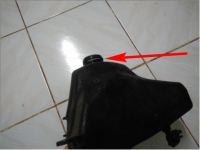AndyAndyAndy
Member
- Messages
- 42
- Reaction score
- 1
Fuel tank is cracked right at the neck. Just under the thread to screw on the cap. It goes around 50% of the circuit. Usually I would drill holes, zip-tied it, put epoxy/glue around. But because of threads I can't do any of that.
Do you have any idea how to fix that? I have hard time finding replacement tank. I would prefer cheaply fix this one anyway.

I just found that tank in promotion for 8$ including shipping
Do you have any idea how to fix that? I have hard time finding replacement tank. I would prefer cheaply fix this one anyway.

I just found that tank in promotion for 8$ including shipping

